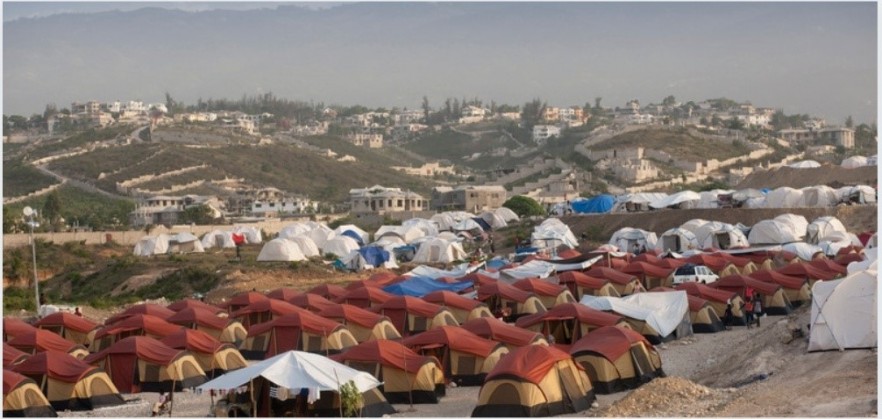
By Faris Gohir (MWN Hub Manager)
Where do people turn to when they
are forced to flee or displaced from their homes? That would be refugee
camps. These are temporary settlements built to accommodate refugees fleeing
from war whilst providing immediate protection and assistance. Although not
permanent solutions. These camps do meet the basic needs for these refugees
including food, shelter and medical treatment. There are currently over 6
million people in refugee camps which only accounts for 22% of the world’s
refugee population (UNHCR)
with the vast majority of refugees still living in cities within urban areas in
informal settlements such as slums and collective centres with poor living
conditions.
It is not uncommon in situations
of long term displacements that camp services are expanded to education and
livelihood opportunities and the unfortunate reality is that many grow up in refugee camps and spend a large amount of their lives there; it
is possible for people to spend years or even decades between refugee camps
with little to no chance to rebuild their lives.
Let’s
look at the 5 world’s largest refugee camps and what life is like there:
Um Rakuba (Sudan)
This camp located in Sudan is home to many Ethiopian refugees fleeing from the violence that occurred due to the growing crisis in Ethiopia’s Tigray region which resulted in more than 60,000 refugees arriving with more than 30% being children (UNHCR). Since this crisis began in the middle of the COVID-19 pandemic, there were concerns for the health and safety of refugees but despite this the camp have managed to find measures to continue to operate. Um Rakuba camp provides education for the child refugees through makeshift classrooms as hundreds of refugees still arrive at the camp daily.
Za’atari (Jordan)
Since the start of the Syrian civil war, thousands of Syrian refugees have arrived at the Za’atari camp in Jordan which opened in 2012 making this the largest camp for Syrian refugees in the world. Currently the camp accommodates for more than 76,000 refugees and has made great progress in providing education and life opportunities with 18,000 enrolled in school and 13,000 adults granted a work permit by the Jordanian government to legally work in Jordan. Although the situation in Syria has made the life of the refugees drastically difficult leaving them with little or next to nothing, there is a glimmer of hope for them to build a better future.
Located in northwest Kenya, Kakuma refugee camp was established in 1992 in response to thousands of children fleeing from the ”Lost Boys Of Sudan civil war”. Today the camp has more than 150,000 refugees whereby most of the refugees are from Somalia and South Sudan. Overcrowding in Kakuma has stressed the camps infrastructure especially during the COVID-19 pandemic, therefore making essential supplies such as clean water, food and medicine scarcer however the UNHCR increased efforts to provide hygienic items in order to protect against the pandemic. Despite the situation that the refugees of this camp find themselves in, the youth still have potential with students in Kakuma regularly outperforming Kenyan national averages, passing national examinations with an average pass rate of 88%, compared to Kenya’s average pass rate of 76%.
Dadaab Refugee Complex (Kenya)
Also
located in Kenya is the Dadaab Refugee Complex, which is made up of three large
refugee camps: Hagadera, Dagahaley and Ifo. These camps mainly host Somali
refugees who have arrived at as early as 1991 as a result of the civil war in
Somalia. In addition, there was an exponential intake of Somali refugees in
2011 due to the widespread drought and famine in southern Somalia. Currently,
Dadaab hosts more than 200,000 refugees and asylum-seekers collectively amongst
the three camps. Moreover, numerous refugees within this refugee complex have
grown up in the camps or even lived their entire lives there. Dahabo, the woman
pictured above, arrived in the camp when she was only two years old and via the
refugee camp’s schools and programs, she was able to pursue education and
attained a degree. Now 30 years old, she is a teacher at the Hagadera camp. (UNHCR).
Kutupalong (Bangladesh)
Lastly, the world’s largest refugee camp resides in the Cox’s Bazar
region of Bangladesh housing over 800,000 Rohingya refugees, countless of whom
were forced to flee their homes in Myanmar due to the attack in Rakhine State
in August 2017. The refugees of Kutupalong face many challenges,
one of the primary ones being monsoons. The yearly monsoon season is
devastating, causing widespread flooding and damage to shelters. However,
community protection efforts have been a focus of the camp for many years,
empowering refugees by educating them on how best to protect themselves and
their shelters. From reinforcing bamboo for sturdier shelters to flood rescue
classes that raise awareness on the risks of drowning, Rohingya refugees are
placed at the centre of the camp’s operations and its development. Tragically,
recently the camp was struck by a fire back in March this year, resulting in
families being separated as well as 15 deaths, 560 injuries and over 400 people
missing and the camps two largest nutrition centres, the food distribution and
medical clinic centres burnt to the ground. Although the United Nations
arranged for aid to be implemented for the camps, the fire still worsened the
already difficult lives of the refugees caught up in the blaze.
How you can help:
If refugee camps are continuously supported and funded
then it constantly allows for opportunities to be presented to refugees to
better their lives. You can help by raising awareness about the life of
refugees but also by donating to the agencies/charities that are providing
ongoing assistance to these people.
Charities that you could donate to that specialise in
helping refugees:
Join Our Movement
Raise your voice and get connected

 1
1